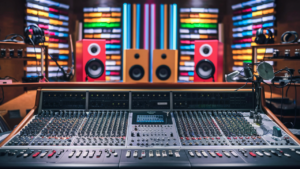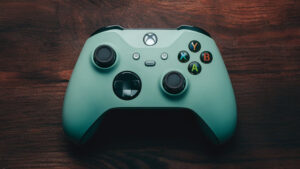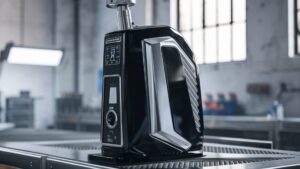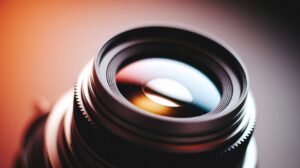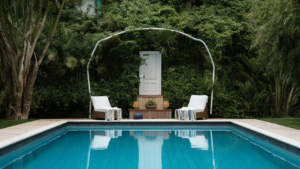Studio monitors are designed for accurate audio reproduction in controlled environments, while PA speakers focus on volume and coverage in live settings. Each serves distinct purposes, catering to different audio needs.
Choosing the right audio equipment can significantly impact sound quality and performance. Studio monitors excel in providing clarity, allowing producers and musicians to hear every detail of their mixes. They’re ideal for recording studios and home setups. On the other hand, PA speakers are built for loudness and durability, making them suitable for concerts, events, and public gatherings.
Understanding the differences helps you select the right gear for your specific requirements. Whether you’re mixing in a studio or performing live, knowing these distinctions is essential for achieving optimal audio results.
Introduction To Sound Systems
Sound systems play a crucial role in both music production and live events. They help deliver clear audio to the audience or provide accurate sound for mixing. Understanding the difference between studio monitors and PA speakers is essential for musicians and sound engineers.
Purpose Of Studio Monitors
Studio monitors are designed for accurate sound reproduction. They allow producers and sound engineers to hear every detail in their mix. Here are some key purposes:
- Provide flat frequency response for precise mixing.
- Reveal flaws in recordings and mixes.
- Assist in making critical listening decisions.
Studio monitors are often used in:
- Home studios
- Professional recording studios
- Mixing environments
They are built to minimize distortion and deliver accurate sound across all frequencies. This helps artists create music that sounds good on various playback systems.
Role Of Pa Speakers
PA speakers are designed for live sound reinforcement. They amplify sound for large audiences. Here are some key roles:
- Deliver powerful sound to large crowds.
- Enhance speech clarity during events.
- Support live performances and concerts.
PA speakers are commonly used in:
- Concerts
- Public speaking events
- Festivals
They focus on volume and projection rather than accuracy. This makes them ideal for delivering sound to a wide area.
Core Differences
Understanding the differences between studio monitors and PA speakers is essential. Each serves a unique purpose in audio production and performance. Here are the main differences to consider.
Design Philosophy
The design philosophy of studio monitors focuses on accuracy. They aim to reproduce sound as faithfully as possible. This helps producers make the best decisions during mixing.
PA speakers, on the other hand, prioritize volume and projection. They are built to fill large spaces with sound. Their design often enhances certain frequencies to create a more engaging experience for live audiences.
| Feature | Studio Monitors | PA Speakers |
|---|---|---|
| Purpose | Mixing and mastering | Live performances |
| Sound Accuracy | High fidelity | Modified for impact |
| Size | Compact | Larger |
| Portability | Less portable | More portable |
Sound Reproduction
Studio monitors provide a flat frequency response. This ensures that all sounds are heard equally. It helps in detecting flaws in the audio mix.
PA speakers often emphasize bass and treble. This enhancement creates a more lively atmosphere. It’s perfect for engaging audiences during performances.
- Studio Monitors:
- Flat response
- Ideal for detailed listening
- PA Speakers:
- Boosted bass and treble
- Designed for loud environments
Choosing the right speaker depends on your needs. Studio monitors suit recording environments. PA speakers excel in live settings.
Decoding The Technicalities
Understanding the differences between studio monitors and PA speakers is essential. Each has unique features that affect sound quality. This section explores important technical aspects: frequency response and sound dispersion. Let’s break it down.
Frequency Response
Frequency response refers to how well a speaker reproduces sound across different frequencies. It is measured in Hertz (Hz). A wide frequency range helps capture more detail in music.
| Speaker Type | Frequency Range |
|---|---|
| Studio Monitors | 20 Hz – 20 kHz |
| PA Speakers | 40 Hz – 20 kHz |
Studio monitors offer a wider frequency range. They provide more accurate sound reproduction. This accuracy helps producers mix music effectively.
Sound Dispersion
Sound dispersion describes how sound spreads from a speaker. It affects how well people hear music in different areas.
- Studio Monitors: Designed for close listening. They focus sound in a narrow range.
- PA Speakers: Built for large audiences. They disperse sound over a wider area.
PA speakers use horns and large cones. They ensure sound reaches every corner of a venue. Studio monitors use flat response designs. This helps in precise mixing and monitoring.
Choosing between studio monitors and PA speakers depends on your needs. Consider where and how you will use them. This knowledge helps in making an informed decision.
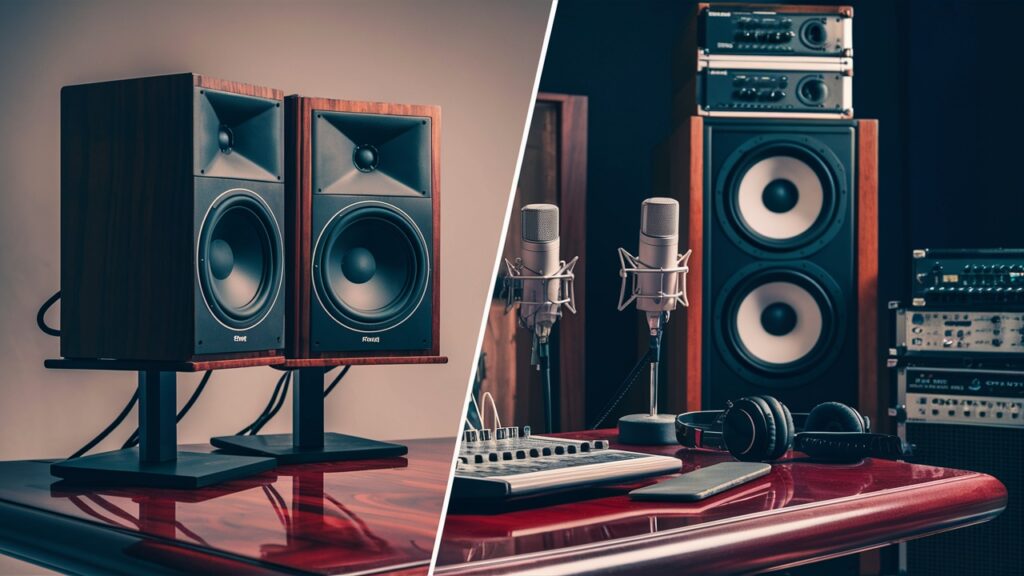
Physical Attributes
The physical attributes of studio monitors and PA speakers play a vital role. These features impact sound quality, usability, and overall performance.
Size And Portability
Size and portability are key factors to consider. Here’s how studio monitors and PA speakers differ:
| Feature | Studio Monitors | PA Speakers |
|---|---|---|
| Size | Compact and smaller | Larger, often heavier |
| Weight | Lightweight, easy to move | Heavier, less portable |
| Use Case | Best for home studios | Ideal for live events |
Studio monitors suit small spaces. They fit well on desks. PA speakers need more room. They work well in larger venues.
Construction Materials
Construction materials greatly affect durability and sound quality. Here’s a comparison:
- Studio Monitors:
- Typically made from MDF or plywood.
- Designed for minimal resonance.
- Often have acoustic treatments.
- PA Speakers:
- Usually constructed from durable plastic.
- Built to withstand transport.
- Often include weather-resistant features.
Studio monitors focus on sound clarity. PA speakers prioritize durability and volume.
Connectivity Options
Connectivity options play a crucial role in choosing between studio monitors and PA speakers. Understanding these options helps ensure compatibility with your setup. Here, we explore the input types and integration capabilities of both audio equipment types.
Input Types
Different input types can affect how you connect your audio gear. Here’s a breakdown of common input types for studio monitors and PA speakers:
| Input Type | Studio Monitors | PA Speakers |
|---|---|---|
| Balanced XLR | Yes | Yes |
| TRS (1/4 inch) | Yes | Yes |
| RCA | Yes | Sometimes |
| Speaker Wire | No | Yes |
| USB | Some Models | No |
Studio monitors usually offer balanced inputs. This reduces noise and interference. PA speakers may have more diverse input options. They often include speaker wire connections for greater flexibility.
Integration With Other Equipment
Seamless integration with other equipment is vital for both studio monitors and PA speakers. Consider these aspects:
- Studio Monitors:
- Designed for music production.
- Connect easily to audio interfaces.
- Compatible with mixing consoles.
- Can connect to DAWs via USB.
- PA Speakers:
- Used in live performances.
- Integrate with mixers and amplifiers.
- Can connect to microphones directly.
- Often include built-in amplifiers.
Choose studio monitors for studio setups. They excel in clarity and detail. Opt for PA speakers for live events. They deliver powerful sound over large areas.
Suitability For Venues
Choosing between studio monitors and PA speakers depends on the venue’s needs. Each type serves different purposes. Understanding their features helps in making the right choice.
Home Studios
In home studios, studio monitors are the best option. They provide accurate sound for mixing and production. Here are some reasons:
- Sound Accuracy: They reproduce sound clearly.
- Near-field Design: Ideal for small spaces.
- Low Distortion: Maintains audio quality.
Check out this comparison of studio monitors:
| Feature | Studio Monitors | PA Speakers |
|---|---|---|
| Sound Quality | High accuracy | Higher volume |
| Design | Near-field | Full-range |
| Best Use | Mixing | Live shows |
Live Performance Spaces
For live performance spaces, PA speakers shine. They project sound over larger areas. Here are key features:
- High Volume Output: Suitable for big crowds.
- Wide Coverage: Reaches all audience members.
- Durable Design: Built for travel and use.
PA speakers are great for events like:
- Concerts
- Festivals
- Public speeches
Choosing the right equipment can elevate any performance. Understanding venue requirements is essential.
Price Considerations
Choosing between studio monitors and PA speakers involves careful price considerations. Both options vary widely in cost. Understanding your budget is crucial for making a wise investment.
Budgeting For Quality
Quality audio equipment often comes with a price tag. Here are some key factors to consider:
- Brand Reputation: Well-known brands usually cost more.
- Specifications: Higher specs lead to better sound quality.
- Features: Additional features increase the price.
Here’s a quick comparison of average prices:
| Type | Price Range | Quality Level |
|---|---|---|
| Studio Monitors | $100 – $3000 | Varies from entry-level to professional |
| PA Speakers | $150 – $5000 | Varies from basic to high-end |
Long-term Investment
Think of audio equipment as a long-term investment. Here’s why:
- Durability: Quality products last longer.
- Resale Value: High-quality items retain value.
- Performance: Better performance leads to fewer upgrades.
Investing in quality ensures satisfaction over time. Choose wisely for your audio needs.
Making The Right Choice
Choosing between studio monitors and PA speakers can be tricky. Each has unique features suited for different uses. Understanding your needs helps you decide which is best for you.
Assessing Your Needs
Start by identifying your primary use. Here are some questions to consider:
- Will you produce music or host live events?
- What is your budget?
- How much space do you have?
Studio monitors are perfect for:
- Music production
- Critical listening
- Mixing and mastering
PA speakers excel in:
- Live performances
- Public speaking
- Large gatherings
| Feature | Studio Monitors | PA Speakers |
|---|---|---|
| Sound Accuracy | High fidelity | Powerful but colored |
| Portability | Less portable | Highly portable |
| Ideal Use | Home studios | Live events |
Listening Tests And Demos
Test both options before buying. Listening tests reveal sound quality differences. Here’s how to conduct effective demos:
- Visit a local store with both speakers.
- Bring familiar tracks to test sound.
- Adjust volume and settings.
- Compare clarity and bass response.
- Trust your ears; choose what sounds best.
Consider bringing a friend for a second opinion. Their perspective may help finalize your decision. Always prioritize comfort and preference in sound.
Care And Maintenance
Proper care and maintenance keep your studio monitors and PA speakers in top shape. Regular attention helps protect your investment. Routine upkeep can extend the life of your audio equipment.
Protecting Your Investment
Investing in audio equipment requires protection. Here are some tips to safeguard your studio monitors and PA speakers:
- Use speaker stands to prevent vibration damage.
- Keep equipment away from heat sources.
- Avoid exposure to moisture and humidity.
- Use covers or dust caps when not in use.
Consider placing your speakers in a safe location. This helps avoid accidental falls or damage. Cable management also prevents tripping hazards.
Routine Upkeep
Routine maintenance keeps your equipment performing well. Follow these simple steps for upkeep:
- Dust your speakers regularly with a soft cloth.
- Check cables for wear and tear.
- Inspect connections for corrosion.
- Keep vents clear for proper airflow.
Perform these checks monthly. Regular upkeep prevents minor issues from becoming major problems. Your audio quality depends on how well you maintain your gear.
Frequently Asked Questions
Studio Monitors Or Pa Speakers: Which Is Better?
Studio monitors are designed for accurate sound reproduction. They are ideal for mixing and mastering music. PA speakers, on the other hand, are built for loud sound projection in live settings. Your choice depends on your specific audio needs and environment.
What Are The Main Differences Between Studio Monitors And Pa Speakers?
The primary difference lies in their purpose. Studio monitors provide flat frequency response for accurate mixing. PA speakers emphasize sound projection and volume for live performances. Understanding these distinctions can help you choose the right equipment for your audio setup.
Can I Use Pa Speakers For Studio Work?
While you can use PA speakers for studio work, they may not provide accurate sound. They often enhance certain frequencies to project sound better in large spaces. For precise mixing and mastering, studio monitors are recommended to ensure an uncolored sound.
Are Studio Monitors Suitable For Live Performances?
Studio monitors are not ideal for live performances. They are designed for close listening environments with minimal sound projection. PA speakers are specifically built to handle larger crowds and project sound effectively, making them a better choice for live settings.
Conclusion
Choosing between studio monitors and PA speakers depends on your specific needs. Studio monitors excel in audio accuracy, perfect for mixing and mastering. PA speakers, on the other hand, deliver powerful sound for live events. Evaluate your requirements carefully to make the best decision for your audio experience.
